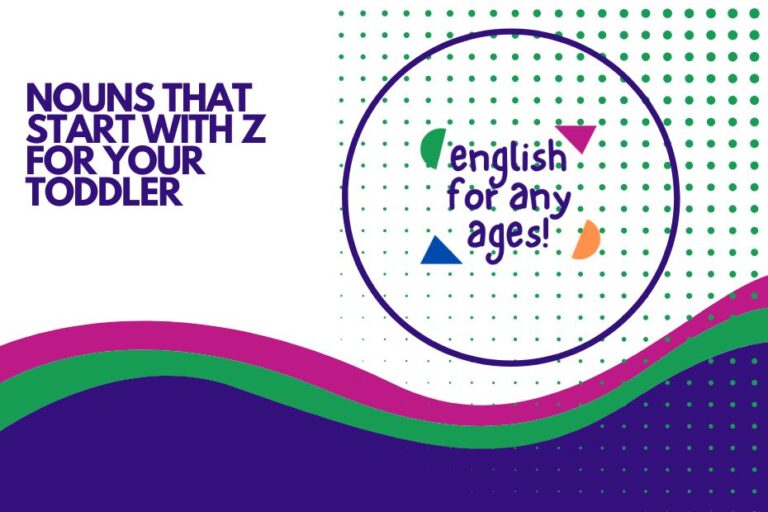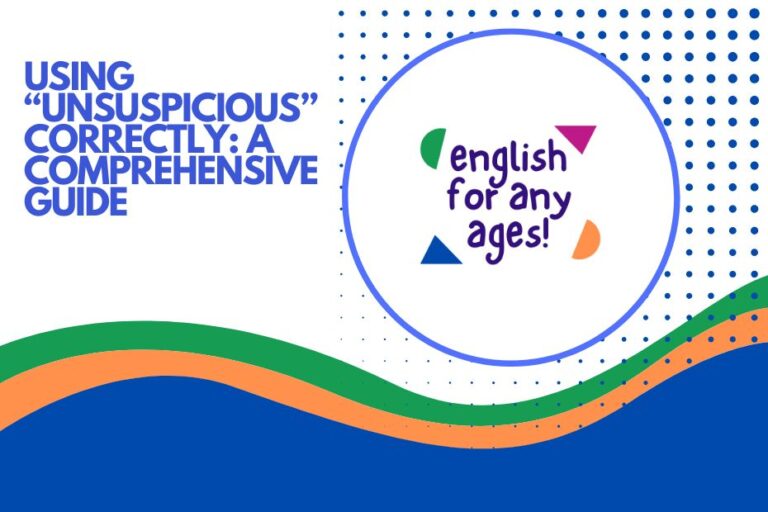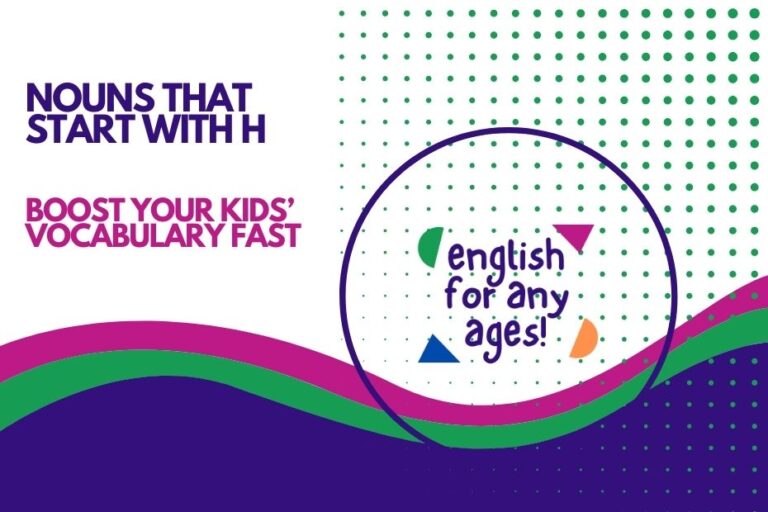Mastering “Chock Full”: A Comprehensive Guide
Understanding the idiom “chock full” is essential for enhancing your English vocabulary and mastering idiomatic expressions. This phrase, meaning “completely full,” is commonly used in everyday conversation and writing to vividly describe something overflowing or packed to capacity.
This article will provide a detailed exploration of “chock full,” covering its definition, structural breakdown, usage rules, common mistakes, and practical examples. Whether you are an ESL learner or a native speaker looking to refine your language skills, this guide will equip you with the knowledge and practice necessary to use “chock full” accurately and confidently.
By understanding the nuances of “chock full,” you can add color and precision to your descriptions, making your communication more engaging and effective. This article is designed for learners of all levels, offering a structured approach to mastering this useful idiom.
From understanding its origins to practicing its usage in various contexts, this comprehensive guide ensures you gain a solid grasp of “chock full” and its applications in the English language.
Table of Contents
- Definition of “Chock Full”
- Structural Breakdown
- Examples of “Chock Full” in Sentences
- Usage Rules
- Common Mistakes
- Practice Exercises
- Advanced Topics
- Frequently Asked Questions (FAQ)
- Conclusion
Definition of “Chock Full”
“Chock full” is an idiomatic expression that means completely full, filled to capacity, or overflowing. It is used to describe something that is packed very tightly or contains a large amount of something. The term “chock” refers to something that wedges or fills a space tightly, while “full” simply means filled. Together, they create a stronger, more vivid image of something being completely packed.
The phrase is often used informally and can add emphasis to your descriptions. It implies not just that something is full, but that it is so full that there is hardly any room left.
Understanding the meaning of “chock full” helps you to appreciate its descriptive power and use it effectively in your own writing and speech. The term is versatile and can be applied to various contexts, from describing physical spaces to abstract concepts.
Structural Breakdown
The phrase “chock full” is composed of two main parts: “chock” and “full.” Understanding the individual components helps to grasp the overall meaning and usage of the idiom.
“Chock”
The word “chock” historically refers to a wedge or block used to prevent movement or fill a gap. In the context of “chock full,” it signifies something that is tightly packed or wedged in.
This part of the phrase contributes to the sense of something being completely filled without any space to spare. Consider how a mechanic might use a chock to prevent a car from rolling; similarly, “chock” in this idiom suggests a filling so complete it prevents anything else from entering.
“Full”
The word “full” is straightforward and widely understood, meaning filled to capacity. When combined with “chock,” it intensifies the idea of being filled, emphasizing that something is not just partially full but completely so.
This simple word adds a layer of completeness to the expression, leaving no doubt about the extent of the filling.
Combining “Chock” and “Full”
When “chock” and “full” are combined, they create a powerful idiom that conveys the idea of something being completely and tightly filled. The word order is fixed; it’s always “chock full” and not “full chock.” The combination adds a sense of emphasis and vividness to the description, making it more impactful than simply saying something is “full.” The historical context of “chock” as a wedging or filling agent enhances the imagery of something being packed to its absolute limit.
Examples of “Chock Full” in Sentences
To fully understand how to use “chock full,” let’s explore various examples in different contexts. The following tables provide a range of sentences showcasing the versatility of this idiom.
Table 1: Describing Physical Spaces
This table illustrates how “chock full” can be used to describe physical spaces that are completely filled.
| Sentence | Context |
|---|---|
| The attic was chock full of old furniture and forgotten treasures. | Describing a crowded storage space. |
| Her suitcase was chock full, making it difficult to close. | Describing an overpacked suitcase. |
| The stadium was chock full of enthusiastic fans. | Describing a crowded stadium. |
| The shelves were chock full of books, leaving no space for more. | Describing overflowing bookshelves. |
| The parking lot was chock full of cars on a Saturday morning. | Describing a crowded parking lot. |
| The jar was chock full of homemade cookies. | Describing a container filled with cookies. |
| The toy chest was chock full of dolls and teddy bears. | Describing a toy chest packed with toys. |
| The garden was chock full of blooming flowers. | Describing a garden overflowing with flowers. |
| The bus was chock full of commuters during rush hour. | Describing a crowded bus. |
| The pantry was chock full of canned goods and snacks. | Describing a pantry filled with food items. |
| The closet was chock full of clothes, shoes, and accessories. | Describing a closet packed with clothing items. |
| The recycle bin was chock full of paper and plastic. | Describing a recycle bin filled to capacity. |
| The bakery was chock full of pastries and cakes. | Describing a bakery overflowing with baked goods. |
| The movie theater was chock full on opening night. | Describing a crowded movie theater. |
| The shopping cart was chock full of groceries. | Describing a shopping cart filled to the brim. |
| The backpack was chock full of textbooks and notebooks. | Describing a backpack packed with school supplies. |
| The refrigerator was chock full of leftovers and drinks. | Describing a refrigerator packed with food. |
| The concert hall was chock full of music lovers. | Describing a concert hall filled with audience members. |
| The gift bag was chock full of presents. | Describing a gift bag packed with gifts. |
| The donation box was chock full of clothes and toys. | Describing a donation box filled with donations. |
| The fish tank was chock full of colorful fish. | Describing a fish tank crowded with fish. |
| The drawer was chock full of socks and underwear. | Describing a drawer packed with clothing. |
| The treasure chest was chock full of gold coins and jewels. | Describing a treasure chest filled with valuables. |
| The email inbox was chock full of unread messages. | Describing an email inbox filled with messages. |
| The online forum was chock full of interesting discussions. | Describing a discussion forum filled with conversation. |
| The hard drive was chock full of files and programs. | Describing a hard drive filled with data. |
Table 2: Describing Abstract Concepts
This table shows how “chock full” can be used to describe abstract concepts like emotions, ideas, and information.
| Sentence | Context |
|---|---|
| The presentation was chock full of useful information. | Describing a presentation filled with data. |
| His mind was chock full of creative ideas. | Describing a mind filled with thoughts. |
| The book is chock full of interesting anecdotes. | Describing a book filled with stories. |
| The seminar was chock full of practical advice. | Describing a seminar filled with guidance. |
| Her heart was chock full of joy and gratitude. | Describing a heart filled with emotions. |
| The website is chock full of helpful resources. | Describing a website filled with information. |
| The curriculum is chock full of challenging courses. | Describing a curriculum filled with coursework. |
| The training program was chock full of new skills. | Describing a training program filled with knowledge. |
| The project is chock full of potential risks. | Describing a project filled with hazards. |
| The conversation was chock full of witty remarks. | Describing a conversation filled with humor. |
| The documentary was chock full of historical facts. | Describing a documentary filled with information. |
| The lecture was chock full of thought-provoking questions. | Describing a lecture filled with inquiries. |
| The recipe is chock full of delicious ingredients. | Describing a recipe filled with components. |
| The report was chock full of detailed analysis. | Describing a report filled with data. |
| The movie was chock full of exciting action scenes. | Describing a movie filled with action. |
| The museum was chock full of ancient artifacts. | Describing a museum filled with historical items. |
| The discussion was chock full of diverse perspectives. | Describing a discussion filled with viewpoints. |
| The presentation was chock full of visual aids. | Describing a presentation filled with graphics. |
| The proposal was chock full of innovative ideas. | Describing a proposal filled with concepts. |
| The workshop was chock full of hands-on activities. | Describing a workshop filled with exercises. |
| The festival was chock full of cultural performances. | Describing a festival filled with entertainment. |
| The game was chock full of unexpected twists. | Describing a game filled with surprises. |
| The course was chock full of valuable insights. | Describing a course filled with knowledge. |
| The show was chock full of amazing talent. | Describing a show filled with skill. |
| The magazine was chock full of interesting articles. | Describing a magazine filled with content. |
| The software is chock full of useful features. | Describing software filled with functions. |
Table 3: Describing Events and Situations
This table illustrates how “chock full” can be used to describe events and situations that are filled with activity or people.
| Sentence | Context |
|---|---|
| The conference was chock full of industry experts. | Describing a conference filled with professionals. |
| The party was chock full of lively guests. | Describing a party filled with people. |
| The town square was chock full of holiday shoppers. | Describing a town square filled with shoppers. |
| The event was chock full of exciting activities. | Describing an event filled with things to do. |
| The summer camp was chock full of enthusiastic children. | Describing a summer camp filled with kids. |
| The festival was chock full of food vendors. | Describing a festival filled with vendors. |
| The marathon was chock full of determined runners. | Describing a marathon filled with athletes. |
| The trade show was chock full of innovative products. | Describing a trade show filled with items. |
| The workshop was chock full of eager learners. | Describing a workshop filled with students. |
| The concert was chock full of screaming fans. | Describing a concert filled with audience members. |
| The farmers market was chock full of fresh produce. | Describing a farmers market filled with goods. |
| The school play was chock full of talented actors. | Describing a school play filled with performers. |
| The charity gala was chock full of generous donors. | Describing a charity gala filled with contributors. |
| The street fair was chock full of local artists. | Describing a street fair filled with artists. |
| The family reunion was chock full of relatives. | Describing a family reunion filled with family. |
| The community meeting was chock full of concerned citizens. | Describing a community meeting filled with people. |
| The graduation ceremony was chock full of proud parents. | Describing a graduation filled with parents. |
| The sporting event was chock full of excited spectators. | Describing a sporting event filled with fans. |
| The holiday celebration was chock full of festive cheer. | Describing a holiday filled with joy. |
| The art exhibition was chock full of stunning masterpieces. | Describing an art exhibition filled with artwork. |
| The cooking class was chock full of aspiring chefs. | Describing a cooking class filled with cooks. |
| The book club was chock full of avid readers. | Describing a book club filled with readers. |
| The volunteer event was chock full of helpful people. | Describing a volunteer event filled with volunteers. |
| The training session was chock full of motivated employees. | Describing a training session filled with workers. |
| The seminar was chock full of industry leaders. | Describing a seminar filled with professionals. |
| The summit was chock full of global delegates. | Describing a summit filled with representatives. |
Usage Rules
While “chock full” is a relatively straightforward idiom, there are some usage rules to keep in mind to ensure you use it correctly.
Rule 1: Adjective Use
“Chock full” functions as an adjective, so it should be used to modify a noun. It describes the state of being completely full.
For example, “The box is chock full of toys” is correct because “chock full” modifies the noun “box.” Ensure that the noun you are modifying can logically be filled or contain something.
Rule 2: Word Order
The word order is fixed: it is always “chock full,” not “full chock.” This is an established idiom, and reversing the order changes the meaning and makes it incorrect. Always maintain the “chock full” order to adhere to standard usage.
Rule 3: Context
Use “chock full” in contexts where something is not just full but completely and tightly packed. It implies a level of fullness that leaves little or no room for anything else.
Avoid using it when something is only partially full or has ample space remaining. For instance, saying “The glass is chock full of water” implies it is filled to the brim, almost overflowing.
Rule 4: Register
“Chock full” is generally considered an informal term. While it’s acceptable in everyday conversation and informal writing, it might not be appropriate for formal or academic contexts.
In formal settings, consider using more precise alternatives like “completely full,” “filled to capacity,” or “overflowing.”
Rule 5: Subject-Verb Agreement
Ensure that your subject-verb agreement is correct when using “chock full.” The phrase itself does not affect the verb agreement, but the noun it modifies does. For example, “The jar is chock full of cookies” (singular noun, singular verb) and “The shelves are chock full of books” (plural noun, plural verb).
Common Mistakes
Even experienced English speakers can make mistakes when using “chock full.” Here are some common errors and how to avoid them.
Mistake 1: Incorrect Word Order
Incorrect: “The drawer was full chock of socks.”
Correct: “The drawer was chock full of socks.”
Explanation: The correct idiom is always “chock full.” Reversing the order is a common mistake that should be avoided.
Mistake 2: Using in Formal Contexts
Incorrect: “The report was chock full of data, as per the research findings.”
Correct: “The report was filled with comprehensive data, as per the research findings.”
Explanation: “Chock full” is informal. In formal writing, use more precise and professional alternatives.
Mistake 3: Using When Something Is Not Completely Full
Incorrect: “The glass was chock full of juice, about halfway.”
Correct: “The glass was half full of juice.”
Explanation: “Chock full” implies complete fullness. If something is only partially full, use a more accurate description.
Mistake 4: Misunderstanding the Meaning
Incorrect: “The room was chock full of air.”
Correct: (In most contexts, this is redundant. You might say “The room was chock full of balloons.”)
Explanation: “Chock full” implies a dense packing of tangible items or information. Air fills a room naturally, so the phrase is not appropriate unless you are referring to air being somehow contained or emphasized (like in balloons).
Mistake 5: Incorrect Subject-Verb Agreement
Incorrect: “The shelves is chock full of books.”
Correct: “The shelves are chock full of books.”
Explanation: Ensure that the verb agrees with the subject (shelves – plural). Failure to do so can result in grammatical errors.
Practice Exercises
Test your understanding of “chock full” with these practice exercises. Each exercise includes multiple questions with answers provided below.
Exercise 1: Fill in the Blanks
Complete the following sentences using “chock full.”
| Question | Answer |
|---|---|
| 1. The backpack was ______ of textbooks and notebooks. | chock full |
| 2. The conference was ______ of industry experts. | chock full |
| 3. Her suitcase was ______ , making it difficult to close. | chock full |
| 4. The shelves were ______ of books, leaving no space for more. | chock full |
| 5. The attic was ______ of old furniture and forgotten treasures. | chock full |
| 6. The website is ______ of helpful resources. | chock full |
| 7. The jar was ______ of homemade cookies. | chock full |
| 8. His mind was ______ of creative ideas. | chock full |
| 9. The stadium was ______ of enthusiastic fans. | chock full |
| 10. The event was ______ of exciting activities. | chock full |
Exercise 2: Correct the Mistakes
Identify and correct the mistakes in the following sentences.
| Question | Corrected Sentence |
|---|---|
| 1. The report was full chock of useful information. | The report was chock full of useful information. |
| 2. The drawer is chock full with socks. | The drawer is chock full of socks. |
| 3. The glass was chock full of water, about a quarter full. | The glass was about a quarter full of water. |
| 4. The shelves is chock full of books. | The shelves are chock full of books. |
| 5. The email inbox was chock full by messages. | The email inbox was chock full of messages. |
| 6. The party was chock full from guests. | The party was chock full of guests. |
| 7. The presentation was chock full on information. | The presentation was chock full of information. |
| 8. The museum were chock full of artifacts. | The museum was chock full of artifacts. |
| 9. The show are chock full of talent. | The show is chock full of talent. |
| 10. The book be chock full of stories. | The book is chock full of stories. |
Exercise 3: Sentence Construction
Create your own sentences using “chock full” in the following contexts.
- Describing a crowded bus: The bus was chock full of commuters during rush hour.
- Describing a museum: The museum was chock full of ancient artifacts.
- Describing a presentation: The presentation was chock full of useful information.
- Describing a garden: The garden was chock full of blooming flowers.
- Describing a toy chest: The toy chest was chock full of dolls and teddy bears.
- Describing a shopping cart: The shopping cart was chock full of groceries.
- Describing an attic: The attic was chock full of old furniture and forgotten treasures.
- Describing a training program: The training program was chock full of new skills.
- Describing a website: The website is chock full of helpful resources.
- Describing a party: The party was chock full of lively guests.
Advanced Topics
For advanced learners, exploring the nuances and subtle variations of “chock full” can further refine your understanding and usage.
Synonyms and Alternatives
While “chock full” is a vivid idiom, there are several synonyms and alternatives that can be used in different contexts to convey a similar meaning. Understanding these alternatives allows for more precise and nuanced communication.
- Completely full: A straightforward and formal alternative.
- Filled to capacity: Emphasizes the maximum limit.
- Overflowing: Suggests that something is so full it’s spilling over.
- Packed: Indicates a tight and dense filling.
- Teeming: Implies a lively and abundant filling, often with living things.
- Brimming: Suggests fullness to the very top edge.
Regional Variations
While “chock full” is widely understood in English-speaking countries, there might be regional variations or preferences for alternative expressions. In some regions, other idioms or phrases might be more commonly used to convey the same meaning.
Being aware of these variations can help you better understand and communicate with people from different regions.
Historical Context
The term “chock” has nautical origins, referring to a wedge used to secure ropes or objects on a ship. Understanding this historical context adds depth to the meaning of “chock full,” emphasizing the idea of something being tightly secured or filled.
This historical connection can enrich your appreciation of the idiom and its evocative power.
Frequently Asked Questions (FAQ)
Here are some frequently asked questions about using “chock full,” along with detailed answers to help clarify any confusion.
- What does “chock full” mean?
“Chock full” means completely full, filled to capacity, or overflowing. It describes something that is packed very tightly or contains a large amount of something.
- Is “chock full” formal or informal?
“Chock full” is generally considered an informal term. It is suitable for everyday conversation and informal writing but might not be appropriate for formal or academic contexts. In formal settings, consider using more precise alternatives.
- Can I say “full chock” instead of “chock full”?
No, the correct idiom is “chock full.” Reversing the word order is a common mistake and should be avoided. The phrase is fixed and should always be used in the “chock full” order.
- How do I use “chock full” in a sentence?
“Chock full” functions as an adjective and should be used to modify a noun. For example, “The box is chock full of toys.” Ensure that the noun you are modifying can logically be filled or contain something.
- What are some synonyms for “chock full”?
Some synonyms for “chock full” include completely full, filled to capacity, overflowing, packed, teeming, and brimming. The best alternative depends on the specific context and the nuance you want to convey.
- Is “chock full” used in all English-speaking countries?
Yes, “chock full” is widely understood in English-speaking countries. However, there might be regional variations or preferences for alternative expressions. Being aware of these variations can help you better understand and communicate effectively.
- Can “chock full” be used to describe abstract concepts?
Yes, “chock full” can be used to describe abstract concepts like emotions, ideas, and information. For example, “The presentation was chock full of useful information” or “Her heart was chock full of joy and gratitude.”
- How do I avoid common mistakes when using “chock full”?
To avoid common mistakes, ensure you use the correct word order (“chock full”), use it in appropriate contexts (where something is completely full), and avoid using it in formal writing. Also, ensure your subject-verb agreement is correct.
Conclusion
Mastering the idiom “chock full” enhances your ability to describe fullness and abundance in a vivid and engaging way. By understanding its definition, structural components, usage rules, and common pitfalls, you can confidently incorporate it into your vocabulary.
Remember that “chock full” functions as an adjective, describing something completely and tightly packed, and is best suited for informal contexts.
Practice is key to mastering any idiom. Continue to explore examples, complete exercises, and incorporate “chock full” into your everyday conversations and writing.
By doing so, you will not only expand your vocabulary but also refine your ability to communicate effectively and expressively. Embrace the nuances of the English language and enjoy the richness it offers.






